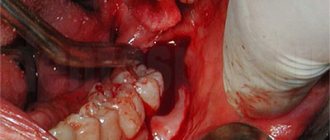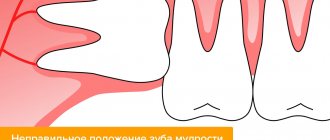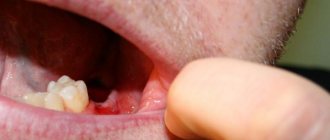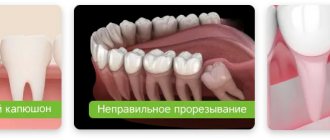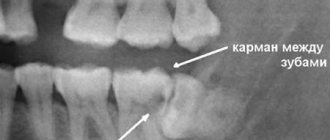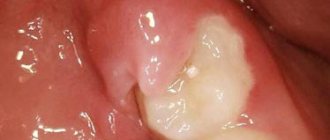There are a huge number of diseases in dentistry that can be cured only by removing problematic teeth. Many patients are mistaken in believing that a tooth is just a bone, the diseases of which cannot cause serious complications to the body. In fact, the tooth has a complex structure: it consists of a hard enamel layer, loose dentin and a neurovascular bundle. The infection can spread through the dentinal tubules into the dental pulp, where the nerves and blood vessels are located. When it is damaged, the tooth begins to hurt severely.
If treatment is not started in time, periodontitis (a connective tissue disease) develops, which is accompanied by the collapse of the neurovascular bundle. In this clinical situation, the concentration of pathogenic microflora in the canal increases. If endodontic treatment is delayed, the infectious process spreads to the periapical area, and from there to the bone. In this case, serious damage to the bone material is observed with a violation of its integrity. When the bone is severely degraded, the teeth become loose and unsupported and eventually have to be removed.
The inflammatory process can spread from one dental unit to others, leading to their infection. Most often, this situation occurs with periodontal disease. If left untreated, all neighboring teeth will become infected and it will be impossible to cure them.
The dentists at Dr. Granov’s clinic always try to preserve the patient’s teeth, but if this is not possible, they advise removing the diseased teeth.
Features of tooth extraction in the upper jaw
Unlike lower “eights,” upper wisdom teeth are considered less problematic. They tend to grow straighter, have less retention, and rarely have roots that are bent, twisted, or excessively long. The bone of the upper jaw is not so massive and dense, there are fewer blood vessels in the soft tissues, and the likelihood of hitting the trigeminal nerve is lower. Therefore, the upper wisdom teeth rarely have to be removed, and if it comes to surgery, it is easier than removing the lower wisdom tooth.
What instruments are used to remove teeth?
Dental forceps have been and remain tools for removing teeth. For certain groups of teeth, a different type of forceps is used, since our teeth have different structures and are located differently in the dentition. For example, to remove the upper anterior tooth and the maxillary canine, there are straight forceps, and the remaining upper teeth are removed using S-shaped ones. The incisors of the lower jaw are pulled out using forceps curved at 90º with narrow cheeks (the part of the forceps that grasps the crown or root of the tooth being removed). The fangs and the two teeth following them are pulled with forceps, on the contrary, with wide cheeks. To remove large molars of the lower jaw, forceps with spikes that go between the roots are used.
Simple removal of the top eight
Simple is the removal of the upper wisdom tooth, which does not require preliminary dissection of the gums. This is how molars are removed that have erupted without pathologies and have small, even roots. Simple removal is carried out in 4 stages.
- The doctor conducts a diagnosis
- takes an X-ray or CT scan, assessing the position of the tooth and the structure of the root system. - The patient receives pain relief.
Removal of the upper “eight” is usually performed under local anesthesia. - The doctor places forceps on the crown of the tooth and performs luxation and traction
- he rocks the tooth and pulls it out of the socket. - The hole is treated with an antiseptic and, if necessary, sutured.
Read more about the operation in a separate article.
Complex removal of a wisdom tooth in the upper jaw
A complex operation involves additional manipulations to extract a molar: cutting the gum, sawing the crown, extracting the tooth in parts. This is how impacted, semi-impacted and dystopic teeth are removed. The percentage of complex operations when removing the top eight is small, but sometimes they still have to be performed. Here's how it happens.
- As with a simple operation, an X-ray
or
CT
, otherwise there is a chance that the operation will be performed poorly. - The doctor numbs the gum.
In the most severe cases, removal of the upper wisdom tooth can be performed in a hospital setting under general anesthesia, but anesthetic injections are more often used. - An incision
is made , the mucous flap is peeled off, and access to the crown is opened. - The doctor begins to extract the molar
. Complex teeth often have to be removed piece by piece, carefully cutting them with a drill. Sometimes they even cut down a section of the jawbone to gain access to the roots. - After the tooth is removed, the doctor checks the socket for the presence of bone fragments, treats the wound and sutures the gum. If there has been a resection of the jawbone, then osteoplasty
- the hole is filled with bone chips, which over time will form new bone tissue to replace the removed one.
After a complex wisdom tooth extraction, the patient should prepare for a long rehabilitation: the wound can take up to several weeks to heal.
Use of anesthesia
Tooth extraction, like any other operation, is performed with the use of painkillers. Most often, local injection anesthesia is used: the doctor injects an anesthetic directly into the gum, and within 3-5 minutes it completely loses sensitivity. To properly numb the surgical site, two injections are required - into the outer and inner parts of the gums. The use of local anesthesia is possible on an outpatient basis; after the operation, the patient can go home.
But sometimes the “eights” have to be removed under general anesthesia. It is usually used if the case is complex and a long operation is required, or several teeth need to be removed, or if the patient is experiencing psychological difficulties. General anesthesia requires hospital conditions, and its price is much higher.
Normal and pathological signs
What should the wound look like after extraction? It is necessary to consider which symptoms are normal and which are pathological. Normally, on day 3, the wound is covered with a white film, which signals the healing process. By 4-5 days the entire hole becomes light. If a coating of any other color forms on the surface of the wound, and an unpleasant odor emanates from the mouth, you should immediately consult a doctor. The sign indicates that an infectious process has begun.
Photo of the hole after removal
A normal reaction of the body after extraction is inflammation and swelling of the gums. The signs are due to the fact that during the intervention, damage to soft tissues, blood vessels and nerve endings occurs. Pain after surgery is also normal, but only if it lasts no more than 5-7 days. After removal of sixes, sevens or wisdom teeth, an unpleasant sign radiates to the ears and joints. In the latter case, it becomes difficult for a person to chew. All of these symptoms are normal and usually do not get worse over time. Dentists recommend taking painkillers for 5 days to avoid discomfort.
Bruise on the cheek after tooth extraction
Pathological signs of socket healing after tooth extraction:
- increased pain;
- pulsating nature of pain;
- temperature increase;
- inflammation of the lymph nodes;
- aching sensations in the area of neighboring elements, manifesting itself for more than 2-3 hours;
- rise in temperature;
- signs of intoxication of the body;
- the hole does not overgrow.
An alarming sign after the intervention is the appearance of severe swelling of the cheeks and gums in the first few hours. To reduce the intensity of the symptom, you can apply a cold compress to the problematic side. If the inflammation intensifies or spreads to the chin and neck, you should immediately consult a doctor or call an ambulance. The symptom indicates the rapid progression of an infectious complication.
Photo of a swollen cheek after tooth extraction in the socket
A physiologically normal symptom after tooth extraction is bleeding for several hours. The intensity of bleeding varies for several hours after the intervention. Heavy discharge is observed within 15-30 minutes, after this time the symptom should appear less intensely. The bleeding stops completely after 2 hours.
If the bleeding does not stop, then it is necessary to apply a gauze swab moistened with an antiseptic solution to the damaged area. A doctor is consulted when the performed manipulations do not produce results. An additional symptom that is a reason to consult a doctor is a temperature above 38 degrees.
Is it painful to remove an upper wisdom tooth?
Based on patient reviews, we can conclude that what scares them most about the operation of removing the upper “eights” is pain. But you shouldn’t be afraid of it: modern anesthetics completely block unpleasant sensations. Even if one of the drugs did not provide high-quality pain relief, the doctor will always be able to choose another one. There is no need to endure pain during wisdom teeth removal!
Most often, patients complain of pain not during, but after surgery. This is quite predictable: the anesthesia wears off and the body “remembers” the wound in the mouth. To relieve pain during the rehabilitation period, the doctor prescribes painkillers to the patient. With a simple removal of a wisdom tooth from above, 1-2 appointments may be enough, but after a complex operation, you will have to take pills for several days.
Rules of conduct after tooth extraction
How to care for the hole after extraction? Strict adherence to the dentist’s recommendations will reduce the intensity of pain and speed up the regeneration of damaged tissue.
The following rules should be followed:
- Avoid excessive physical activity in the first 2-3 days after the intervention. It is advisable to give preference to passive rest.
- Avoid eating for 2-3 hours after surgery. Consumption of foods and drinks provokes blood clot disorders. If food gets into the hole, this may cause increased discomfort.
- Try to transfer the load to the healthy side of the jaw.
- In the postoperative period, stop smoking and drinking alcoholic beverages. Alcohol increases pain and provokes an increase in the inflammatory process.
- Do not touch the socket with toothpicks or other foreign objects. A blood clot is very important for successful wound regeneration and its protection from pathogenic flora. It is better to remove food particles that have fallen into the hole by rinsing.
- Treat the oral cavity with antiseptic solutions from the 3rd day of surgery.
- Take painkillers if unpleasant symptoms intensify.
The dentist recommends that you stop rinsing your mouth immediately after the extraction. After 2-3 days you can use:
- Chlorhexidine;
- Miramistin;
- Furacilin;
- A weak solution of potassium permanganate.
Intensive rinsing is unacceptable, as it can cause the destruction of the protective clot. It is better to perform baths: the patient needs to take water into his mouth and hold it near the affected area for 1-3 minutes. After this, the solution is spat out. The treatment regimen is supported by diet.
In the first few days after tooth extraction, patients are advised to eat liquid, warm foods. You should avoid consuming sweet foods, soda, and alcohol. Drinks must not be drunk through a straw.
Possible complications
The structural features of wisdom teeth determine the possibility of surgical and postoperative complications - this is another reason for patients to be concerned about the removal of wisdom teeth. Fortunately, they are quite rare and in most cases are associated with insufficient professionalism of the doctor. If the surgeon acts carefully, then unpleasant consequences can be avoided. However, it is worth knowing what you might encounter.
- Tooth destruction during the extraction process.
This can happen if the integrity of the enamel is damaged by caries, and the doctor presses too hard on the forceps. It is accompanied by a characteristic cracking sound and can greatly frighten the patient. Requires careful removal of fragments from the hole. - Fracture of the jaw bone.
This is also a consequence of the rough work of the surgeon, who, by applying forceps, can capture part of the alveolar process along with the tooth. - Alveolitis.
This is inflammation of the socket, accompanied by swelling, pain, fever and bad breath. Requires immediate sanitation of the wound surface and antibiotics. - Damage to the maxillary sinus.
A rare but very dangerous complication when perforation of the wall of the maxillary sinus occurs. To avoid this, the doctor should carefully study the x-ray and act as carefully as possible.
Indications for removal of all teeth
Dentists recommend complete tooth extraction in very rare cases. This is usually caused by periodontal disease, which is characterized by excessive mobility of the teeth. Also, all teeth must be removed before orthopedic treatment.
With periodontal disease, doctors remove all teeth if they begin to move in all planes, i.e. with periodontal disease of the 3rd degree.
Complete removal of teeth for orthopedic reasons is carried out before installing removable dentures and before restoring the integrity of the dentition using dental implantation.
Recovery period
How long does recovery take after removal of upper wisdom teeth and what limitations does it impose? In most cases, after 1-2 days the patient returns to normal life, but sometimes recovery takes longer. To prevent the rehabilitation period from being prolonged, it is very important to follow the doctor’s recommendations:
- take prescribed antibiotics, painkillers and anti-inflammatory drugs;
- do not visit the bathhouse, sauna, swimming pool, or take a bath;
- follow a diet, if possible, eat only soft foods;
- refrain from smoking.
If the doctor did not make mistakes during removal, and the patient carefully followed all the doctor’s recommendations, then the recovery period will pass quickly, and the problem of the upper “eights” can be forgotten forever.
